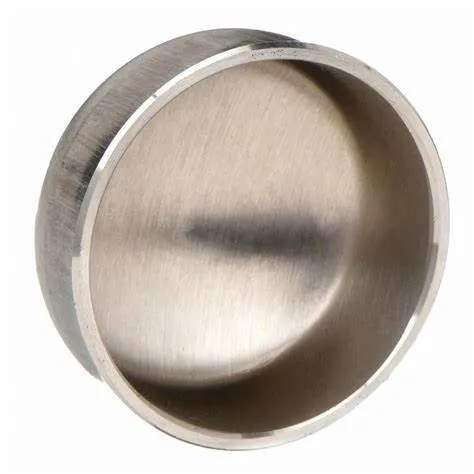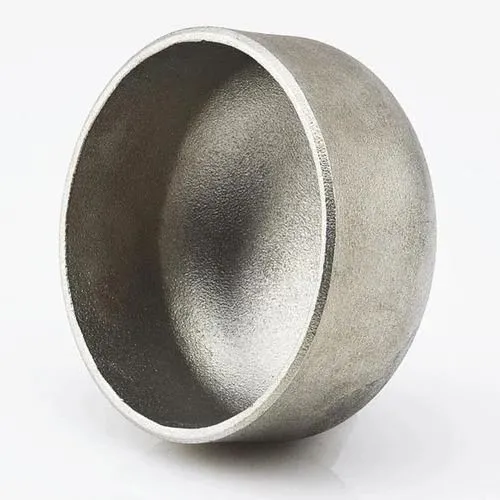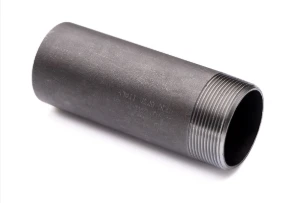JIS B2311 — це японський промисловий стандарт, який охоплює фітинги труб для стикового зварювання, включаючи кришки, що використовуються в системах трубопроводів. Заглушки для зварювання встик служать для закриття кінця труби, забезпечуючи герметичність для запобігання витоку або забрудненню. Ось вступ до ковпачків для стикового зварювання JIS B2311:
- 1. JIS B2311 Standard:
- - Стандарт JIS B2311 визначає вимоги до конструкції, розмірів, матеріалів, виготовлення та випробування зварювальних фітингів, включаючи кришки, у системах трубопроводів.
- - Стандарт гарантує, що кришки, виготовлені відповідно до стандартів JIS, відповідають стандартам якості та сумісні з іншими компонентами трубопроводів.
- 2. Кришка для зварювання встик:
- - Заглушка для зварювання встик, згідно з JIS B2311, є фітингом, призначеним для надійного покриття та герметизації кінця труби, забезпечуючи захист і підтримуючи цілісність системи трубопроводів.
- - Ковпачки використовуються в ситуаціях, коли кінець труби вимагає закриття, постійно або тимчасово, щоб запобігти витоку, забрудненню або забезпечити обробку системи.
- 3. Матеріал і конструкція:
- - Кришки для зварювання встик відповідно до специфікацій JIS B2311 доступні з різних матеріалів, таких як вуглецева сталь, нержавіюча сталь і легована сталь, щоб відповідати різним вимогам застосування.
- - Ці ковпачки виготовляються з використанням стандартизованих будівельних методів, щоб забезпечити міцне та герметичне з’єднання при приварюванні до кінця труби.
- 4. Застосування та переваги:
- - Ковпачки для стикового зварювання знаходять застосування в різних галузях промисловості, включаючи нафтову та газову промисловість, хімічні процеси, водоочисні споруди тощо, де потрібно надійно закрити кінці труб.
- - Ковпачки забезпечують захист кінців труб від зовнішніх факторів, запобігають забрудненню та допомагають підтримувати чистоту та цілісність системи трубопроводів.
- 5. Монтаж і зварювання:
- - Для забезпечення щільного та герметичного ущільнення важливе значення мають належні методи встановлення, включаючи правильне вирівнювання, підготовку кінця труби та методи зварювання.
- - Зварювання є поширеним методом прикріплення заглушок до труб, що забезпечує надійне та постійне закриття, яке може витримувати тиск, коливання температури та потік рідини в системі.
- Підводячи підсумок, заглушки для стикового зварювання JIS B2311 є ключовими компонентами, які використовуються в системах трубопроводів для надійного ущільнення та захисту кінців труб. Ці кришки відповідають стандартизованим вимогам для забезпечення якості, надійності та сумісності в промислових застосуваннях, де необхідні закриття та захист труб.
What Is a Butt Welding Cap and How Is It Used in Industrial Piping?
In industrial piping systems, end-of-line sealing and branch closures require robust solutions. A butt welding cap serves as a critical component for terminating pipes securely. By providing a seamless, welded closure, this fitting maintains system integrity, prevents leaks, and supports compliance with industry standards.
What Is a Butt Welding Cap?
A butt welding cap—also called a pipe end cap or buttweld end cap—is a round fitting designed to close off the end of a pipe. It’s manufactured to match the pipe’s outer diameter and schedule, with either a hemispherical or flat face. To install, both the pipe end and cap are beveled to form a V‑groove, enabling full‑penetration, fusion welds. Common materials include carbon steel, stainless steel, nickel alloys, and other engineered grades, chosen to satisfy pressure, temperature, and corrosion‑resistance requirements.
How Is Butt Welding Cap Used in Industrial Piping?
Butt welding caps find application across oil & gas, petrochemical, power generation, water treatment, and general process industries for both permanent and temporary closures. During hydrostatic testing, technicians install caps to seal off sections of piping while monitoring for leaks. In new construction or retrofit projects, caps terminate branch lines, future tie‑in spools, or dead‑end mains until system expansion. Welders prepare each joint by cleaning and beveling surfaces, aligning the cap precisely, and executing a root pass followed by filler passes per the qualified Welding Procedure Specification (WPS). Post‑weld heat treatment and non‑destructive examination (NDE)—such as radiography or ultrasonic testing—verify weld integrity and compliance with ASME B16.9 and related standards. Additionally, temporary caps enable safe isolation during maintenance, allowing for segment testing and dewatering under regulatory protocols.
Benefits and Best Practices
Butt welding caps offer a smooth‑bore transition that minimizes flow disruption and stress concentration. Their full‑penetration welds deliver exceptional structural strength and leak resistance. To optimize performance, engineers should:
Select caps with matching material grades and wall thicknesses
Adhere to proper bevel angles and joint fit‑up tolerances
Follow qualified WPS protocols rigorously
Consider cladding or protective coatings in corrosive environments to extend service life
Regular inspection and thorough documentation ensure long‑term reliability and safe operation under demanding conditions.
Butt welding caps are indispensable components for achieving durable, leak‑proof pipe terminations in a wide range of industrial applications.
Butt Welding Cap FAQs
What is a butt welding cap?
|
What materials are commonly used?
|
What standards govern butt welding caps?
|
How are butt welding caps installed?
|
Where are butt welding caps typically used?
|
What are the advantages of threaded caps?
|
















